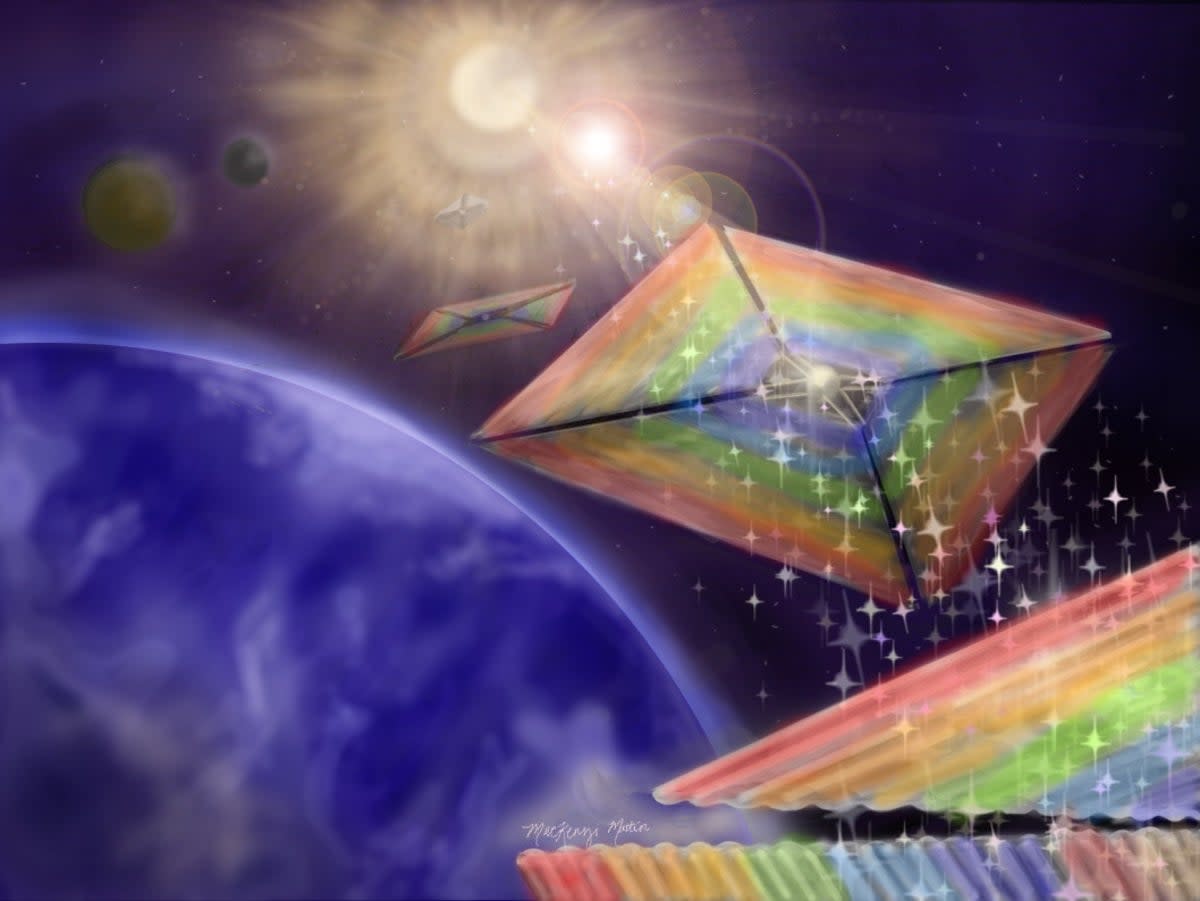Nasa could explore never-before seen parts of the Sun using new solar sails

Nasa is investigating the concept of a solar sail that would be used to explore the poles of the Sun.
The concept, called the Diffractive Solar Sailing project, would use sunlight to propel itself through space and visit parts of the Sun that have never been seen before.
A solar sail works similarly to sails on Earth that use wind, but instead of changes in air pressure they use the momentum of photons bouncing off the sail’s reflective surface to surf the vacuum of space.
These sails are akin to large mirrors, letting craft accelerate to speeds that would not be possible with rockets and conventional fuel. Moreover, they have no moving parts, and never wear out.
Reflective solar sail designs have some drawbacks: they usually have to be large, and thin, and are limited by the direction of the sunlight. This creates a trade-off between their speed and their navigation.
This new solar sail design, however, will use diffraction – the way that light spreads or bends around obstacles – to better travel through space. Small gratings embedded within thin films, would let the sail diffracts light to provide a force that will be more efficient for making orbital maneuvers without having to move a large, flimsy structure.
“Diffraction essentially lets you tailor the angle at which the incoming light is redirected,” Amber Dubill, a mechanical engineer at the Johns Hopkins Applied Physics Laboratory in Laurel, Maryland said. It would also create a rainbow holographic effect on the sail.
“While this technology can improve a multitude of mission architectures, it is poised to significantly impact the heliophysics community’s need for unique solar observation capabilities,” Dubill said.
“Through expanding the diffractive sail design and developing the overall sailcraft concept, the goal is to lay the groundwork for a future demonstration mission using diffractive lightsail technology.”
Solar sails have been experimented with solar sails in the past. During the 1970s, Carl Sagan tried to popularise the idea but was unable to persuade Nasa to actually build one.
It was not until 2010 that the Japanese space agency launched Ikaros, a square, not terribly large solar sail that was intended to fly by Venus. With humanity now looking beyond the Earth, Mars, and to future stars, it’s possible this technology could be an attractive alternative to rocket-powered propulsion.

